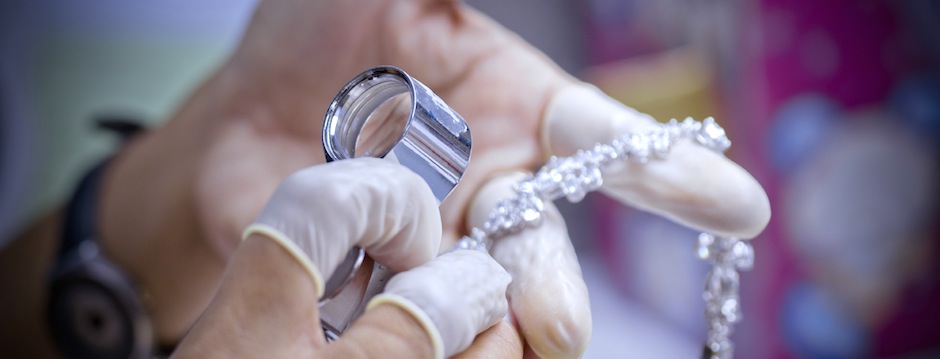
If you are like most jewelry enthusiasts, the colors, shapes and designs of antique or estate jewelry excite you to no end. The geometric shapes, brightly colored gems, and build give each and every piece its own personality. Adding these darling pieces to your jewelry collection will allow you to give them new life.
The thrill of finding a beautiful and unique antique earring, necklace or ring can distract you from the actual quality of the piece. At auctions or sales, it is important to check for many things before falling in love with a gorgeous piece of estate jewelry. We have created an estate jewelry buying guide that you can keep in the forefront of your mind when shopping for a one-of-a-kind piece.
Ask Questions
During auctions and sales, it is important to do as much research as you possibly can. Although you may not know what jewelry will be for sale before the auction, there are simple ways you can conduct your own research throughout the sale. One of the easiest ways to accomplish this is to ask questions. The dealer should be able to answer each question you ask with ease. Here are some things you can ask about:
- History of the jewelry
- Documentation
- Details (the four C’s)
Pay Attention to Detail
This is one of the most important elements to remember when shopping for estate jewelry. It is crucial to inspect each piece of jewelry for chips, scratches or dents in the stone or enamel. Some other flaws to look for are:
- Corrosion
- Discoloration
- Bumps
- Holes
- Cracks
Unlike scratches and dents, these flaws cannot be repaired and can greatly affect the value of the piece. You can easily spot these flaws on your own, but if you are looking for a clearer view, invest in a jeweler’s loupe. These are inexpensive magnifying tools that will help you get a closer look at the condition of gemstones and enamel.
View Documentation
Every jeweler should have proper documentation of the jewelry they are selling. Not only will this increase the value of the piece, but it will also let you know the authenticity of it. It will also provide you with a better sense of history of the gem and the previous owner. This will let you develop a story and give the piece even more of a personality. Some of the most important documentation you should acquire for estate jewelry is:
- Original receipts
- All previous owners’ names
- A photograph of the owner wearing the jewelry
- Handwritten notes, if it was given as a gift
- Authentication documentation
Although these documents should give you the information you need to validate the gem, it is still crucial to have the piece appraised by a jeweler.
Learn The Signs of Fakes
Luckily, fakes are rather easy to spot in estate jewelry – if you know what you are looking for. Antique jewelers are known for leaving their mark on each piece. It is crucial to inspect the piece for a signature or marking that matches documentation. This can easily be accomplished by using a jeweler’s loupe.
In most cases, the jewelers make their stamp or signature hard to identify with the naked eye. Using a magnifying device will help you get a closer look. If you cannot find the mark, ask the seller to identify it for you. If both you and the seller cannot identify the markings, most likely, the piece is fake.
[button link=”https://smoketreejewelers.com/?page_id=101″ size=”medium”]LEARN MORE[/button]